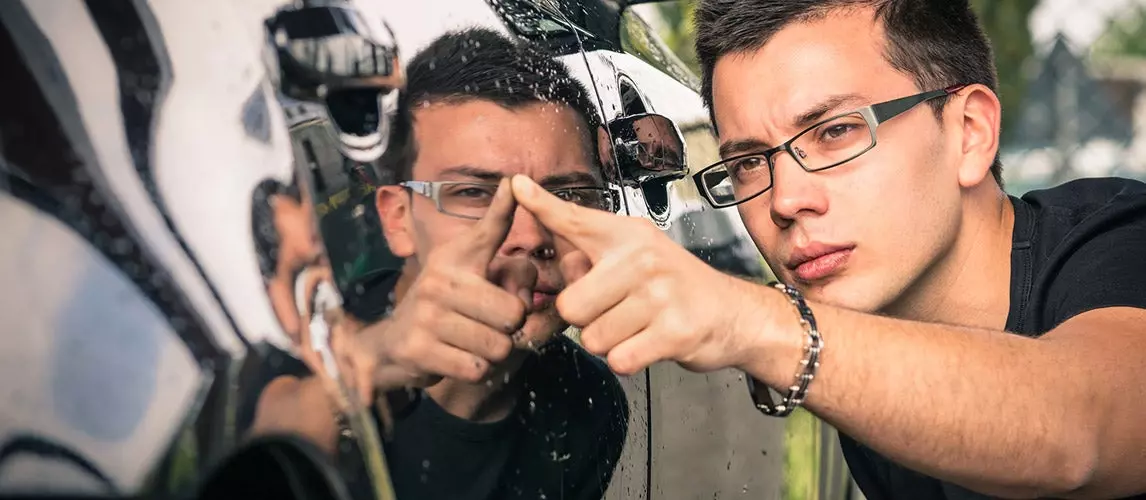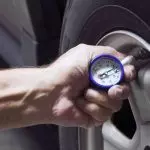Buying a used car can save you a ton of money. It can also allow you to buy a car with more features than what you could afford when buying new. The downside is that you’re buying a car that someone else has driven. Depending on the car you’re looking at, this could be a few years to a decade.
The older a car is, the higher the risk that it has been in an accident. While some accidents aren’t a big deal, others can seriously affect the safety and value of a car. You need to keep an eye out for signs of an accident so that you can make an informed decision about a car. By following this list of signs, you can avoid buying a used car that’s been in an accident.
Something Is Misaligned
Take a walk around the car and look at the gaps between the doors, body panels, trunk lid, bumpers, and fenders. All of these gaps should be uniform in size throughout each gap and be proportional to each other. If one gap is disproportionately larger or smaller than the rest of the gaps on the car, then you need to inspect this area more.
Automotive manufacturers spend time making sure everything aligns perfectly. So if they don’t align now, then this is a sign that something has happened to the car.
Look in the area for mismatched paint or for any signs of damage. It can help to inspect how everything attaches to each other in the area. If the gap is near a door, the hood, or the trunk, then open it up and look inside for more evidence of an accident.
Inconsistent Paint Job
As you walk around and look at the car, pay attention to the paint job. It should have the same color, tone, and shine across all body panels. If there’s paint that doesn’t match, this is a sign that work was done on this part of the car. Common places where this mismatched paint will appear are on the bumpers, around the door jams, and the cowl of the hood.
You can replace the bumper for much cheaper when you don’t have it properly painted. The other areas cost more and take more time to have painted properly. So to cut corners, they won’t do all of the steps, and that leaves a telling mismatch that signals to you that the car has been worked on. Some people don’t even try to hide the accident history with sort of matched paint. They could be so bold as to have two completely different colors for different body panels.
If you see mismatched paint, ask the car owner about it. If you don’t get a satisfactory explanation, then walk away from the car.
Bondo Is a No Go
If you’re buying an older car, then Bondo might be necessary and expected. It’s typically used in small patches to prevent the spreading of rust. However, if the car is newer or the Bondo is over large patches in the body panels, then this is a bad sign.
A telltale sign of expensive Bondo use is a cross-hatching or streaked look that’s showing through the paint. Another obvious sign is sloppy work around the fender wells. People tend to get sloppy here because they know that most people won’t get on the ground and look underneath the car. You can prevent falling for this trick by crouching down and taking a look. It can also help to gently run your fingertips over any suspicious areas. All cars come with a perfectly smooth finish from the factory, so anything that doesn’t feel silky flat has been worked on.
Wonky Frame
Never buy a car that has a bent frame. That forced bending of the frame weakens it and create a dangerous situation. Don’t believe anyone that says they’ve “fixed” a car frame by bending it back into its original shape. This can actually make the metal frame even weaker.
You can find signs of a bent frame by looking at the headlight sconce positioning, the cross members, and the crimping around the wheel wells. You should also look at the frame rails at the rear of the vehicle, as these get damaged often in rear-end accidents.
Fresh Undercoat
When a car gets repaired, a new rubberized undercoat is often applied. This is especially important in northern areas because it protects the car from road grime and corrosion.
Look for a fresh coat of this protective coating. This could be a sign that new parts have recently been installed and needed coating. It’s best to ask the owner and find out if they just wanted to protect the car or if there was an accident.
Cracked Windshield
This sign takes some analysis, as not all cracked windshields signal an accident. You need to pay attention to the location and nuances of the cracking. For example, a spiderweb design that originates from the cowl and radiates out towards the center of the windshield is more likely an accident. A spiderweb that starts in the middle of the windshield from a chip is probably from debris getting kicked up while driving.
Keep in mind that no matter the reason for the crack, it’s a sign that the current owner isn’t taking care of the car. You can get a ticket for a cracked windshield, so replacement is required. Not only will this be an immediate cost for you, but it’s also a sign that other parts of the car might also not be taken care of. Getting a windshield replaced is an easy repair task, so if the owner couldn’t bother to do this, what else have they slacked on?
Missing Fasteners
Many cars today have plastic fasteners that hold the body panels together and on the car. It’s totally normal to lose one or two throughout the course of ownership. Several missing clips or screws where clips should be is a bad sign. If there are screws instead of clips, this is a sign that whoever put the car back together couldn’t get the parts to align correctly. Without the ability to get everything aligned, the clips couldn’t be used. Screws were used instead to hold everything in place.
The most common place you’ll find screws and missing plastic fasteners is along the wheel wells, the edge of the engine bay, in the door jams, and where the fenders bolt to the frame.
Rusty Screws
When a car manufacturer builds a car, they use tools that won’t damage the paint on the bolt heads or screws. Many mechanics don’t have tools like this and will end up chewing up or scratching the fasteners. This opens the door to rust.
Seeing rusty screws or bolts is a sign that they have been taken off and put back on at some point after the initial manufacturing. Ask the owner of the car about this section that has rust developing to find out if their explanation is satisfactory.
Mismatched Headlights
Headlight housings are made out of clear plastic. Over time, that plastic gets scratched and foggy looking. If you see one headlight that’s clear as day and the other is yellowed and hazy, then it’s a clear sign that one was recently replaced. A smart repair mechanic would recommend replacing both, but this doesn’t always happen.
If you see one headlight not matching the other, pop the hood and look at the inside of the engine bay behind the changed headlight. If there was an accident, you should see evidence of it there.
Check the Title
One of the easiest ways to tell if a car has been in an accident is to check the title. Sometimes car owners or amateur mechanics will try to refurbish and sell a car to unsuspecting buyers. They hope you don’t bother checking that the title is clear. Meanwhile, a simple check would tell you that the car has been in an accident, flooded, or stolen.
If you want to check the title and you get a story about how it’s lost or unavailable, walk away. The same goes for a title that has “rebuilt” status.
Avoid the Accident Car and Make a Smart Buy
Buying a used car can help you score a great deal on a car. However, you need to approach the car buying process systematically. If you see a car with a price that seems too good to be true, then it probably is. Don’t let yourself fall in love with a car before you do the necessary research.
Start by looking at the exterior of the car. Then take a closer look at the wheel wells and under the car. Pay attention to the small details, such as the gaps and fasteners. If you find anything questionable, ask the owner about it and gauge their response.
Once you decide you’re happy with the car’s condition, run a title check. This will ensure nothing is hiding that you may have missed. If anything pops up, you still have time to walk away.
While there’s no fail-safe method for buying a used car, by looking for these signs, you can avoid the vast majority of post-accident used cars on the market.









